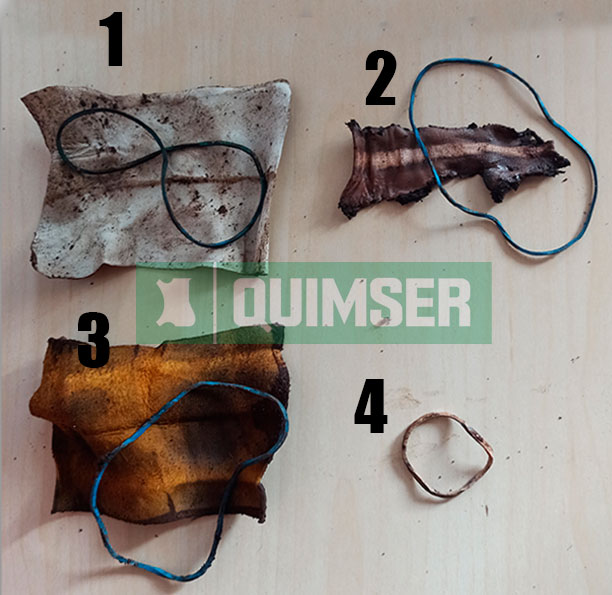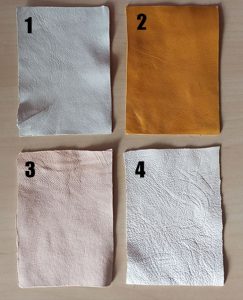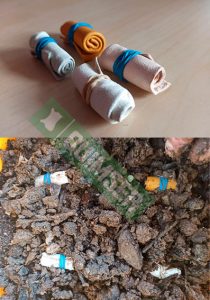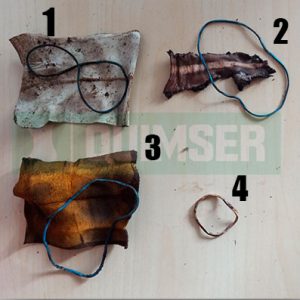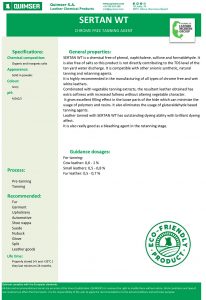Animal skin is a natural product that the leather industry transforms into stable material for the manufacture of clothing, upholstery, footwear, among other goods. Once tanned and retanned, the leather becomes more resistant to environmental degradation depending on the products used.
What means biodegradable?
The adjective biodegradable qualifies those substances that can be degraded by the action of a biological agent, such as certain animals, fungi, and bacteria that can achieve the decomposition of these types of materials..
When a product is biodegradable?
We refer to a product or material biodegradable when it can decompose naturally and ecologically in a relatively short time, non-polluting the environment and becoming a friendly compost product for the earth.
Currently, the leather sector is looking for metal-free; chrome/aluminum) tanning leather substances having a good biodegradability to reduce or eliminate the polluting effects. Processes in which the consumption of water, electricity, and time are reduced are also sought. Poor management of resources and lack of equipment in treatment plants are a cause of the contamination of natural areas.
In recent years, the meat industry has increased the demand for these metal-free substances, especially in developed countries. Even so, leather has diminished its use to give way to other materials. One of these materials is “synthetic leather” or “vegan leather”, which increases its value in the market due to its low price and because it is considered animal friendly since it is a no animal product. However, “vegan skin” is usually made from fabrics, plastics, and PVC resins, all of them with low biodegradability, which generates a long-lasting residue in time and in the environment.
At Quimser technical team caring find alternatives and solutions to help the future of the sector through actions such as:
– To eliminate the use of mineral salts (chromium / aluminum)
– Economising the water used
– Wastewater with low environmental impact
– Reducing time processes (electricity consumption)
– Obtaining leathers highly biodegradable
– Using environmentally friendly chemicals
For this reason, we have developed SERTAN WT, aa raw material that is more respectful of the environment with wastewater that does not generate problems. The aim is to respond to the aforementioned points and to provide solutions for a world that is increasingly demanding about the impact that processes and products generate on the environment.
Biodegradability test # 1
We sample four tanned and retanned sheepskins with different processes and products to determine the impact they generate on the environment.
1. Crust tanned with chrome and retanned with synthetics
2. Crust tanned with vegetable extract and aldehyde. Retanning with synthetics extract
3. Crust tanned with SERTAN WT and retanned with vegetable extract
4. Wet white dry tanned with SERTAN WT
We introduced the skins in a natural compound on July 8, 2020 in order to observe degradation. On August 25, 2020, we checked the condition of the leathers and monitored their condition.
Conclusions:
The leather tanned with SERTAN WT (num.4) in optimal composting conditions fo temperature and humidity, is highly biodegradable. In just 50 days the skin has been 100% decomposed and we found no evidence of skin. Therefore, we can confirm that the environmental impact of leather tanned with SERTAN WT is much lower than that of leather tanned with mineral salts or synthetic products (petroleum derivates).
Download ECO-TANNING COW formula processwith SERTAN WT here
Download ECO-TANNING SHEEP formula process with SERTAN WT here
